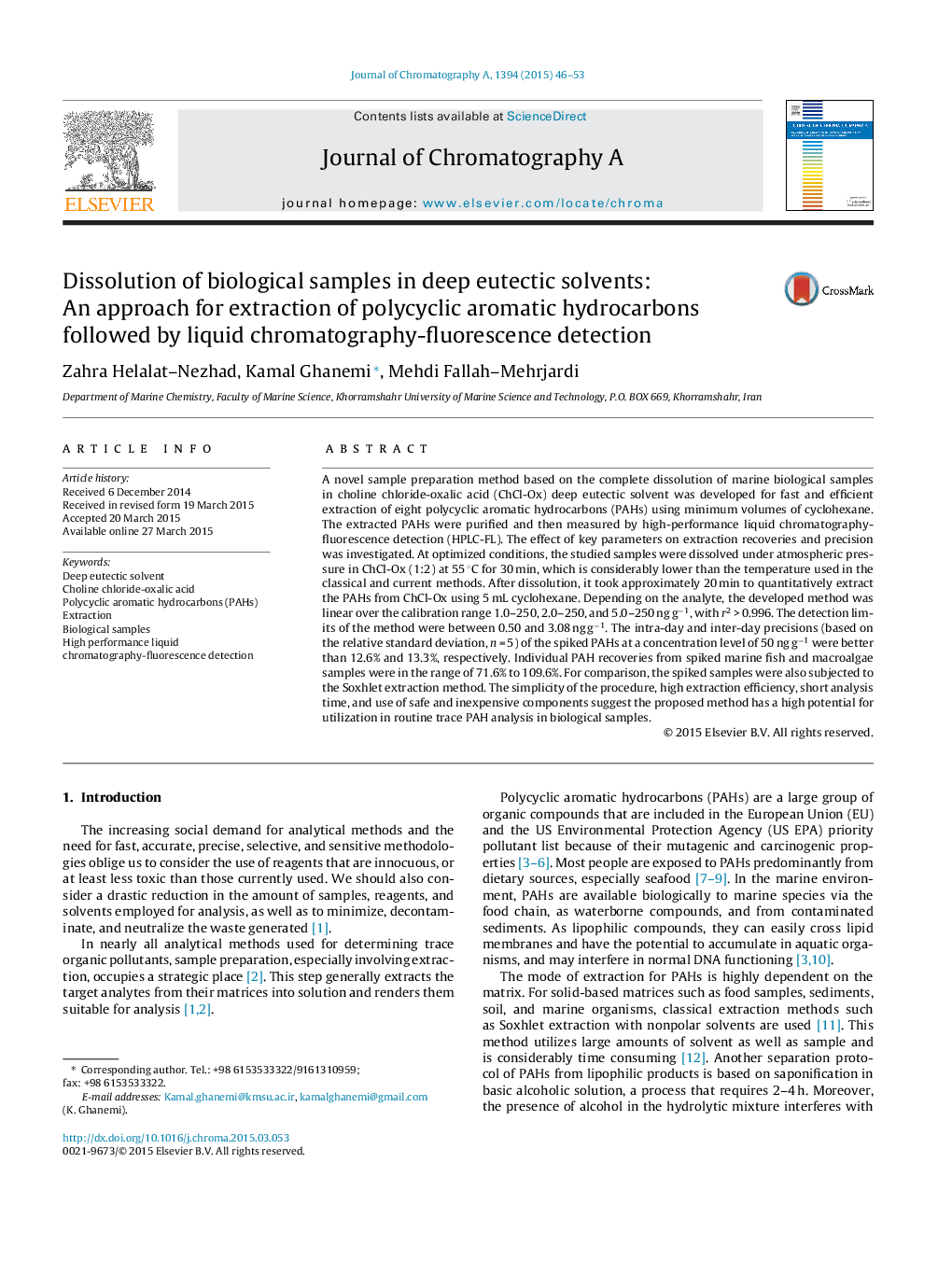| کد مقاله | کد نشریه | سال انتشار | مقاله انگلیسی | نسخه تمام متن |
|---|---|---|---|---|
| 1198870 | 1493532 | 2015 | 8 صفحه PDF | دانلود رایگان |
• Deep eutectic solvents (DES) can open a new way for extracting organic pollutants.
• Solid biological samples completely dissolved in ChCl-Ox DES at 55–60 °C.
• No additional pressure was required for sample dissolution.
• Considerably low volume of organic solvent was necessary for extraction.
• The extraction recoveries were clearly higher than the Soxhlet extraction.
A novel sample preparation method based on the complete dissolution of marine biological samples in choline chloride-oxalic acid (ChCl-Ox) deep eutectic solvent was developed for fast and efficient extraction of eight polycyclic aromatic hydrocarbons (PAHs) using minimum volumes of cyclohexane. The extracted PAHs were purified and then measured by high-performance liquid chromatography-fluorescence detection (HPLC-FL). The effect of key parameters on extraction recoveries and precision was investigated. At optimized conditions, the studied samples were dissolved under atmospheric pressure in ChCl-Ox (1:2) at 55 °C for 30 min, which is considerably lower than the temperature used in the classical and current methods. After dissolution, it took approximately 20 min to quantitatively extract the PAHs from ChCl-Ox using 5 mL cyclohexane. Depending on the analyte, the developed method was linear over the calibration range 1.0–250, 2.0–250, and 5.0–250 ng g−1, with r2 > 0.996. The detection limits of the method were between 0.50 and 3.08 ng g−1. The intra-day and inter-day precisions (based on the relative standard deviation, n = 5) of the spiked PAHs at a concentration level of 50 ng g−1 were better than 12.6% and 13.3%, respectively. Individual PAH recoveries from spiked marine fish and macroalgae samples were in the range of 71.6% to 109.6%. For comparison, the spiked samples were also subjected to the Soxhlet extraction method. The simplicity of the procedure, high extraction efficiency, short analysis time, and use of safe and inexpensive components suggest the proposed method has a high potential for utilization in routine trace PAH analysis in biological samples.
Journal: Journal of Chromatography A - Volume 1394, 15 May 2015, Pages 46–53
